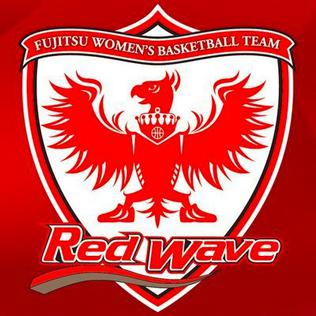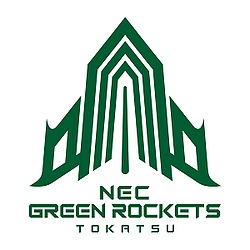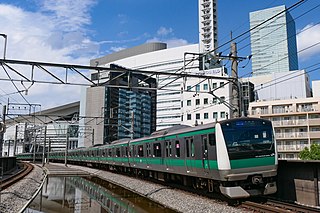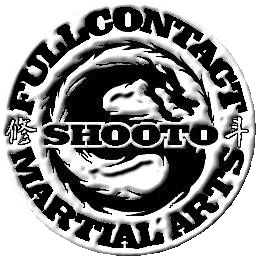 W
WAoimori Park is a 1.8-hectare (4.4-acre) urban park in the central district of Aomori Prefecture's capital city, Aomori in northern Japan. Acting as an urban green space in the city's dense administrative district, it features various themed landscapes. It has been maintained by the prefectural government of Aomori since its opening in 1985. It is also the official ending point for National Route 4 and National Route 7. Various monuments and markers within and near the park denote the terminus of the two highways.
 W
WAsuka (あすか), formerly Monthly Asuka , is a bimonthly Japanese shōjo manga magazine published by Kadokawa Shoten, aimed at teenage girls. The magazine was established in 1985. It is released on the 24th of every odd-numbered month as of May 2021. Much like its sibling publication Shōnen Ace, it places some emphasis on anime tie-ins and spinoffs. Manga serialized in Asuka are published in tankōbon format under the Asuka Comics imprint.
 W
WBungo Suidō Prefectural Natural Park is a Prefectural Natural Park on the east coast of Ōita Prefecture, Japan. Established in 1985, the park spans the municipalities of Saiki, Tsukumi, and Usuki. The park's central focus is upon the Bungo Strait.
 W
WBusiness Jump , was a Japanese seinen manga anthology published by Shueisha under the Jump line of magazines. The manga of Business Jump were published under the "Young Jump Comics" line. This magazine's mascot was an anthropomorphic, Western-style mouse illustrated by Susumu Matsushita.
 W
WCable Networks Akita, also known as CNA, is a cable provider in Japan with 46,418 connected households as of February 27, 2017. The company was established in June 1985. They acquired the naming rights of the Akita Municipal Gymnasium, the home of Akita Northern Happinets, in 2015.
 W
WThe Currency Museum of the Bank of Japan , formally known as the Currency Museum, Institute for Monetary and Economic Studies, Bank of Japan is a museum about Japanese currency located in front of the Bank of Japan building in Chūō, Tokyo.
 W
WEizan Electric Railway Co., Ltd. is a Japanese private railway company whose two lines run entirely in Sakyō-ku in the city of Kyoto, Kyoto Prefecture.
 W
WThe Fujitsu Red Wave are a basketball team based in Kawasaki, Kanagawa, playing in the Women's Japan Basketball League.
 W
WThe Fukuhaku-kai (福博会) is a yakuza organization based in Fukuoka on the Kyushu island of Japan. The Fukuhaku-kai is a designated yakuza group with an estimated membership of 80.
 W
WFukuoka Prefectural Museum of Art opened in Fukuoka, Japan, in 1985. The collection focuses upon artists from Fukuoka Prefecture and Kyūshū more generally, and includes works by Koga Harue. The Museum's precursor, the Fukuoka Prefectural Cultural Hall (福岡県文化会館), which combined art museum with library, opened on 3 November 1964.
 W
WThe Hiroshima City Museum of History and Traditional Crafts is a history museum in Ujina-nishi Park in Hiroshima, Japan.
 W
WINTEX Osaka , officially known as International Exhibition Center, Osaka , is a convention and exhibition center in Suminoe-ku, Osaka, Osaka Prefecture, Japan. The center is located on the Business Creation and Information Transmission Zone of Cosmosquare District in Sakishima Island, a planned business exchange and trading district in Osaka Bay area.
 W
WIppudo, also known as Hakata Ippūdō (博多一風堂) in Japan, is a Japanese ramen restaurant chain with locations worldwide. Ippudo is well known for its tonkotsu ramen, and has been described as "the most famous tonkotsu ramen shop in the country".
 W
WThe IWGP Tag Team Championship is a professional wrestling world tag team championship owned by the New Japan Pro-Wrestling (NJPW) promotion. "IWGP" is the acronym of the NJPW's governing body, the International Wrestling Grand Prix . The title was introduced on December 12, 1985 at an NJPW live event. The IWGP Tag Team Championship is one of two tag team titles contested for in NJPW; the IWGP Junior Heavyweight Tag Team Championship is also sanctioned by NJPW. According to NJPW's official website, the IWGP Tag Team Championship is considered the "IWGP Heavyweight Class", while the Junior Heavyweight Tag Team Championship is listed as the "IWGP Jr. Tag Class". Like most professional wrestling championships, the title is won via the result of a scripted match. Title changes usually happen at NJPW-promoted events; although the title has only changed hands twice at a non-NJPW event, it has been defended in several other promotions.
 W
WThe Japan Prize is awarded to people from all parts of the world whose "original and outstanding achievements in science and technology are recognized as having advanced the frontiers of knowledge and served the cause of peace and prosperity for mankind." The Prize is presented by the Japan Prize Foundation. Since its inception in 1985, the Foundation has awarded 81 people from 13 countries.
 W
WKagoshima City Museum of Art opened within the Ninomaru of Tsurumaru Castle in Kagoshima, Kagoshima Prefecture, Japan, in 1985. The collection includes works by local artists Kuroda Seiki, Fujishima Takeji, and Wada Eisaku, as well as Western painters Claude Monet and Paul Cézanne.
 W
WKamaitachi (かまいたち) was a Japanese visual kei punk rock band, formed in Kyoto and active from 1985 to 1991. Their album Hachamecha Kyou reached number 10 on the Oricon chart and was named one of the top albums from 1989 to 1998 in a 2004 issue of the music magazine Band Yarouze. They have performed several times since reuniting for a one-off performance in 2015.
 W
WThe Kamakura Museum of Literature is a small museum in Kamakura, Kanagawa, Japan, that contains material about writers who have lived, died, or were active in the city of Kamakura itself. The museum displays personal effects, manuscripts, first editions, and documents owned by well over a hundred writers of Japanese literature, including Natsume Sōseki and Kawabata Yasunari, as well as film director Yasujirō Ozu. The villa that hosts the museum, its large garden and its rose garden are also of great interest.
 W
WThe Kyoto Prize is Japan's highest private award for lifetime achievement in the arts and sciences. It is given not only to those that are top representatives of their own respective fields, but to "those who have contributed significantly to the scientific, cultural, and spiritual betterment of mankind". The Kyoto Prize was created in collaboration with the Nobel Foundation and is regarded by many as Japan's version of the Nobel Prize, representing one of the most prestigious awards available in fields that are not traditionally honored with a Nobel.
 W
WLiberty Osaka is a museum dedicated to human rights situated in Naniwa-ku, a ward in south Osaka City. As the first general museum dedicated to human rights in Japan, the focus of its permanent exhibits is the history of the struggle against discrimination experienced by the nation's minority ethnic groups; the Burakumin, the Ainu of Hokkaidō, the Ryukyuans of Okinawa and Japan's communities of Korean and Chinese descent. There are also exhibits dedicated to discrimination issues affecting women, lesbians, gays, bisexuals, and transgender people, the physically challenged, and the survivors of the atomic bombing of Hiroshima and Nagasaki (hibakusha). Founded in December 1985 to document the history of the Osaka human rights movement, it was relaunched in December 1995 as the Osaka Jinken Hakubutsu-kan.
 W
WThe Miki Line was a Japanese railway line in Hyōgo Prefecture, between Yakujin Station in Kakogawa and Miki Station in Miki. This was the only railway line Miki Railway Company operated. The line linked Miki and the West Japan Railway Company Kakogawa Line at Yakujin station.
 W
WMine's is a tuning firm based in Yokosuka, Kanagawa Prefecture, Japan. Mine's was started by Tsuzo Niikura in 1985. It attracted attention in 1988 by being among the first Japanese companies to sell re-programmed ECU systems for popular Japanese sports cars. Today it sells many products, ranging from injectors to complete engines.
 W
WThe Misato Route , signed as Route 6, is one of the tolled routes of the Shuto Expressway system serving the Greater Tokyo Area and is one of five of the routes in the system serving Saitama Prefecture despite not being given a designation to signify this. It is one of two expressways signed as Route 6 in the system; the other expressway signed as Route 6 is the Mukojima Route. The route is a 10.6-kilometer (6.6 mi) long radial highway running northeast from Katsushika in Tokyo to the city of Misato in Saitama Prefecture. Alongside the Mukojima Route, it connects Tokyo's Inner Circular Route in central Tokyo to the Jōban Expressway, which connects the Kantō region to the Tōhoku region.
 W
WGreen Rockets Tokatsu is a Japanese rugby union team in the Japan Rugby League One. The team's captain is Ryota Asano. The previous captain was Takuro Miuchi, who was also the captain of the Japan national rugby union team. Before the semi-professional Top League was created, the team was just known as "NEC". The amateur club was founded in 1985 in the Kantō region.
 W
WNewtype is a monthly magazine publication originating from Japan, covering anime. It was launched by publishing company Kadokawa Shoten on March 8, 1985 with its April issue, and has since seen regular release on the 10th of every month in its home country. Newtype Korea is published in Korea. Spin-off publications of Newtype also exist in Japan, such as Newtype Hero/Newtype the Live and NewWORDS, as well as numerous limited-run versions.
 W
WSabae City's Nishiyama Zoo is a small zoo in the city of Sabae, Fukui Prefecture, Japan. The admission-free municipal zoo is on a low hill. It is known for its red pandas; the species is the official animal of the city.
 W
WOnyanko Club was a large all-girl Japanese pop idol group in the 1980s. Some members of the group participated in spin-off groups, such as Nyangilas, Ushiroyubi Sasaregumi and Ushirogami Hikaretai. Many of the latter two groups' songs were used as theme songs of the popular 80s anime series High School! Kimengumi and Tsuide ni Tonchinkan. Several big-name idols stemmed from the group; one of the best known being Shizuka Kudo. The group was produced by Hiroshi Ishida and Kazuji Kasai, both of whom were producers of Fuji TV's show Yūyake Nyan Nyan.
 W
WOrient Shield is an annual training exercise executed in Japan between the Japanese Ground Self Defense Forces (JGSDF) and United States Army. Since 1985, it has focused on development and refinement of systems and tactics in order to enhance bilateral tactical planning, coordination, and interoperability. The exercise is designed to enhance bilateral combat effectiveness at the battalion and brigade levels while strengthening military-to-military relationships and demonstrating American commitment to support regional security interests. Rotating between JGSDF divisions of the five Regional Armies, Orient Shield leverages the unique capabilities of the training units to provide for ever-increasing tactical complexity and realism. The ongoing tension around North Korea's nuclear program has added an additional layer of importance to the annual exercise.
 W
WPizzicato Five was a Japanese pop band formed in Tokyo in 1979 by multi-instrumentalists Yasuharu Konishi and Keitarō Takanami. After some personnel changes in the late 1980s, the band gained international fame as a duo consisting of Konishi and vocalist Maki Nomiya. With their music blending together 1960s pop, jazz and synth-pop, the group were a prominent component in the Shibuya-kei movement of the 1990s.
 W
WRyōgoku Kokugikan (両国国技館), also known as Ryōgoku Sumo Hall or Kokugikan Arena, is an indoor sporting arena located in the Yokoami neighborhood of Sumida, one of the 23 wards of Tokyo in Japan, next to the Edo-Tokyo Museum. It is the third building in Tokyo associated with the name kokugikan ; the current building was opened in 1985 and has a capacity of 11,098 people.
 W
WThe Saikyō Line is a Japanese railway line operated by the East Japan Railway Company. It connects Ōsaki Station in Shinagawa, Tokyo, and Ōmiya Station in Saitama Prefecture. The line's name is an abbreviation of the two areas the line connects: Saitama and Tōkyō.
 W
WSecom Rugguts is a Japanese rugby union team founded in 1985 by SECOM. Its name is a portmanteau of "Rugger" and "Guts". The club was in the Top League for the first season of the league but was demoted at the end of the season. As the top team of the Top East league and by then coming second after Fukuoka Sanix Bombs in the three-way Top League Challenge Series, Secom got back into the Top League for the 2005-6 season but was relegated again in 2006-7.
 W
WSeisen University is a private university in Hikone, Shiga, Japan. The school was founded in 1985 as a junior college and became a four-year college in 2003.
 W
WShonentai was a three-member Japanese idol group under the talent agency Johnny & Associates. They debuted on December 12, 1985. The group lead an annual musical Playzone from 1986 to 2008 for about 957 performances with a total attendance of over 1.38 million people over the course of 22 years.
 W
WShooto is a combat sport and mixed martial arts organization that is governed by the Shooto Association and the International Shooto Commission. Shooto was originally formed in 1985, first as a particular fighting system and then in 1989 as a mixed martial arts promotion. It is considered one of the first true mixed martial arts competitions, with its Vale Tudo Japan events being essential to the rise of PRIDE Fighting Championships and the development of modern MMA. Many Japanese MMA fighters had their start at Shooto and the organization still helds both professional and amateur tournaments. The list of current and past MMA fighters to come from Shooto roots is quite impressive.
 W
WSpiral, also known as the Wacoal Art Center, is a multi-use building in Aoyama, Tokyo, Japan, that was designed by architect Fumihiko Maki. It was commissioned by lingerie company Wacoal and completed in 1985.
 W
WTDK Akita General Sports Center is a group of sports facilities located in Nikaho, Akita, Japan. It opened in 1985 and hosted National Sports Festival of Japan soccer games in 2007. It is the former home ground of the TDK SC and adjacent to Shirase Antaractic Expedition Memorial Museum and Nankyoku Park.
 W
WThe Tokyo International Film Festival is a film festival established in 1985. The event was held biennially from 1985 to 1991 and annually thereafter. Along with the Shanghai International Film Festival, it is one of Asia's competitive film festivals, and is considered to be the largest film festival in Asia and the only Japanese festival accredited by the FIAPF.
 W
WWakayama City Museum is a local history museum located in the city of Wakayama, Wakayama Prefecture, Japan. It opened in November 1985 to commemorate the 400th anniversary of the construction of Wakayama Castle. The facility is adjacent to the Wakayama Civic Library. In the permanent exhibition room, there are exhibits related to the cultural history of Wakayama city from the prehistoric period through the postwar reconstruction period, as well as many materials pertaining to the Kishū Tokugawa clan, who ruled as daimyō of Kishū Domain under the Edo Period Tokugawa Shogunate.